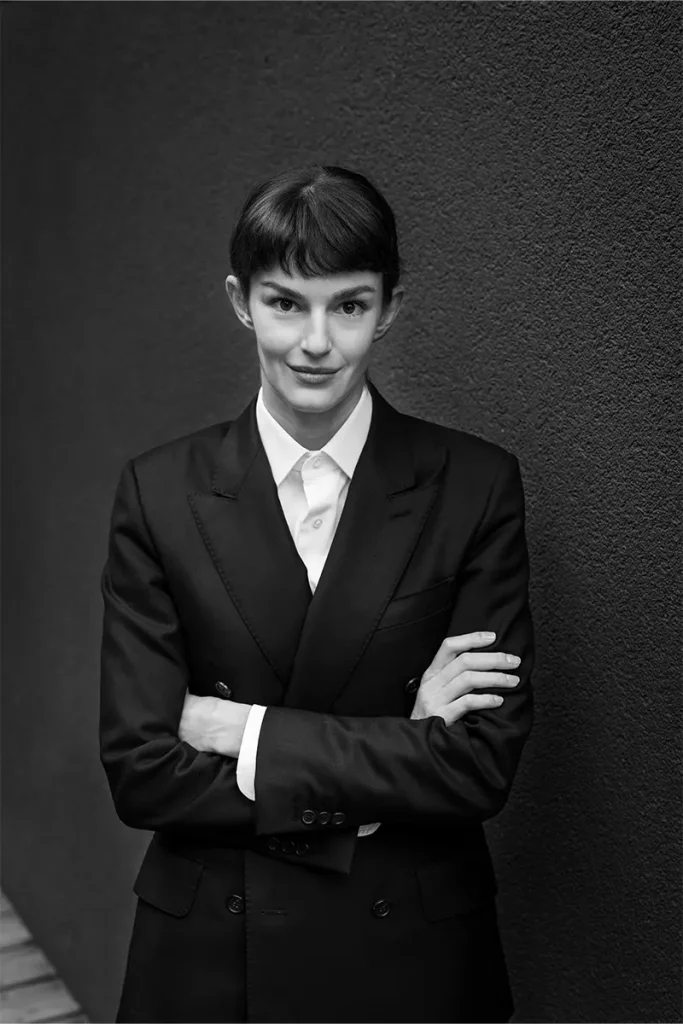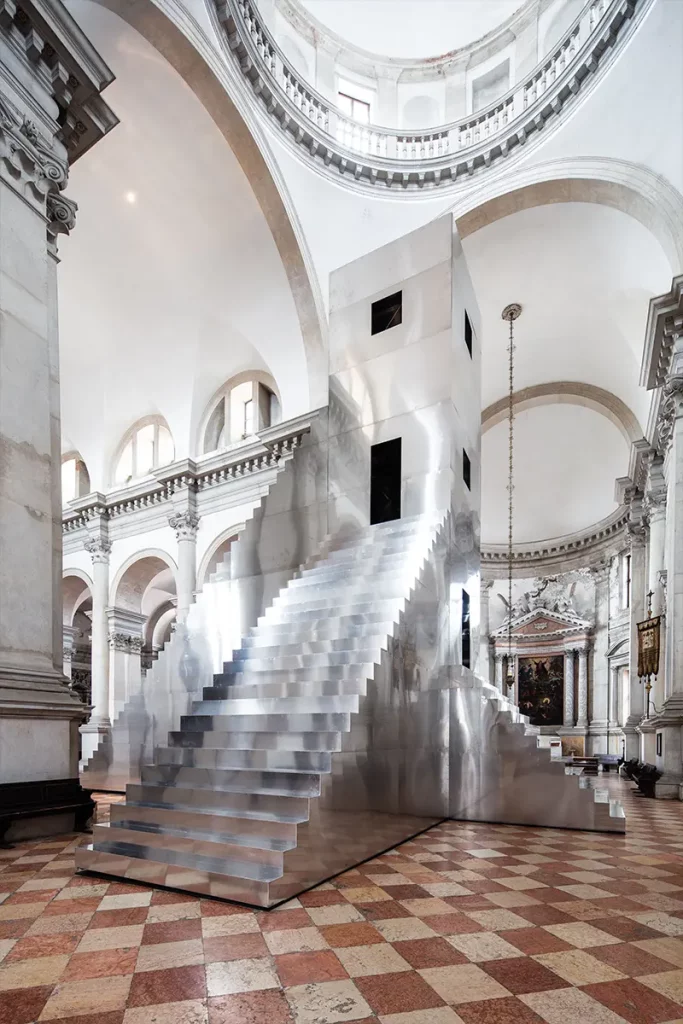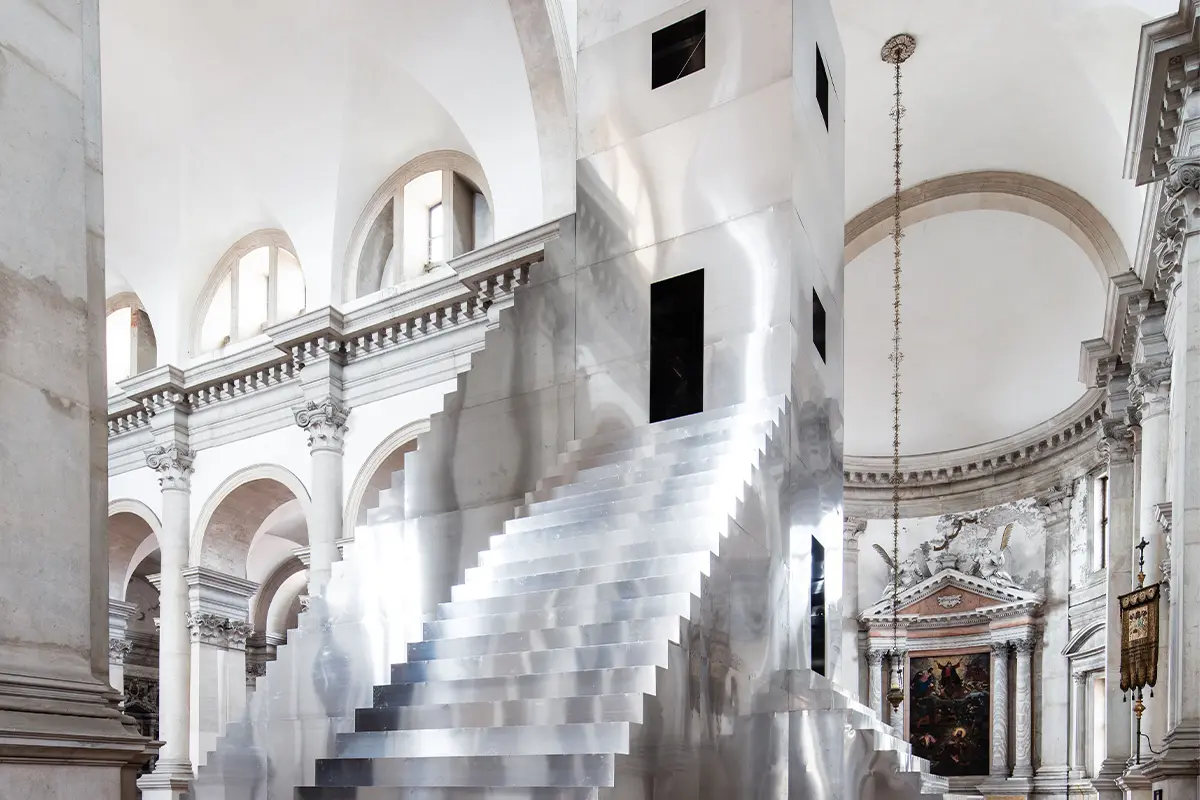Giorgia von Albertini, director of Hauser & Wirth St. Mortiz, on her approach to contemporary art: «the opening in December 2018 was a natural extension of the gallery’s activities in its native Switzerland»
The balance between art history and the art business
Also in the light of your academic background, could you outline your approach to contemporary art from both an art-historical and financial perspective?
«I am specialised in modern and contemporary art and have studied both art history and curatorial studies. Contemporary art is an inherent part of my life: many of my friends are artists, curators or writers. I feel extremely privileged to do what I love and work with so many inspiring people».
«In the work of a gallery director, art history and art theory intersect with financial aspects as we promote and place the work of artists we represent. It’s essential to be extremely well informed, and to really understand the work of the artists we are working with to be able to promote their work and serve our clients. Hence, the academic, historical, and financial cross-pollinate in our profession».
Giorgia von Albertini – working alongside Not Vital
As a curator, can you tell us about your collaboration experience with the artist Not Vital, who has also opened his Foundation in Tarasp, Switzerland? In particular, the exhibition SCARCH, collateral event of the 17th Venice Architecture Biennale at the Abbazia San Giorgio Maggiore.
«Not and I worked together for six years and I curated several of his shows across the globe as well as several group exhibitions and exhibitions of other artists at the various locations of his foundation in Switzerland. SCARCH is a conflation of the two words sculpture and architecture. It is a group of works by Not that transcends the boundaries of both formal terms, creating immersive, site-specific structures that provide a sense of wonder by means of alternative perspectives. Together with Olivier Renaud-Clément, I curated Not Vital. SCARCH at Hauser & Wirth in Somerset in 2020 and edited the namesake monograph that was published by Hauser & Wirth Publishers the same year».
«In 2021, Not and I worked on a collateral exhibition for the 17th Venice Architecture Biennale. The show took place within the Church of San Giorgio Maggiore, a 16th century Benedictine church built by Andrea Palladio on the island of San Giorgio. The heart of this exhibition was an aluminum version of Not’s worldwide project House to Watch the Sunset. At 13 meters tall, the structure towered in the middle of the church and reflected Palladio’s architecture via its polished surface. It was a really ambitious project as we literally inserted a house into a church – you can imagine how challenging this was in terms of production and installation, and how mind-blowing it was to witness it in situ».

New artists and new ways of being discovered
How do you perceive the contemporary art system today in relation to young artists? What qualities do you look for when you visit a studio?
«The great thing about our times is that it is easier than it used to be to achieve visibility for young artists and much easier for curators, critics, and gallerists to discover their work. In addition to staying informed via exhibitions, as well as print and digital media, studio visits are a really integral component for getting to know the work of a contemporary artist. They are also always a real privilege and a special moment. It’s fascinating to witness the behind the scenes, and discover what an artist is reading, researching and looking at».
Giorgia von Albertini on the Swiss art system
As the director of Hauser & Wirth St. Moritz, what are the peculiarities of the Swiss art system?
«Every country and region has specific characteristics but at the same time the art world is truly a global village, and much is shared across borders. Switzerland has a long tradition for championing and collecting art, which is of course special and has contributed significantly to the quality of our museums».
The Engadin Valley: a treasure chest of art
The Engadin valley is characterised by a dynamic and varied art scene, how does the gallery relate to local institutions and artists?
«The Engadin’s art scene is very lively and has a long tradition. Many writers, thinkers, and artists have made work here including Friedrich Nietzsche, Giovanni Segantini, Alberto Giacometti, Vaclav Nijinsky. We are thrilled to be embedded in such a rich cultural scene which includes public museums such as the Segantini Museum, private foundations such as Muzeum Susch and Fundaziun Not Vital, in addition to a great number of national and international galleries showcasing modern and contemporary art.
The opening of Hauser & Wirth St. Moritz in December 2018 was really a natural extension of the gallery’s activities in its native Switzerland: Hauser & Wirth was founded in 1992 in Zurich, a location that has been very successful over the past 30 years, so we wanted to continue expanding the artistic conversation here. Iwan and Manuela also have their own personal connections to the Engadin and while it has a rich cultural heritage and thriving contemporary art scene, we still felt there was room for us to bring something unique to the landscape here.
We already had many friends and collectors who live or have homes in this part of the Alps, and it has been an opportunity to engage with them outside of urban centers, as well as offer our artists and estates a different backdrop to exhibit their works in an area of natural beauty. Despite being a global gallery, we feel it’s important to bring the work of our artists to local audiences in areas outside of the city in new and engaging ways».
A very special ‘bar’ in Sankt Mortiz
The genesis of the Roth Bar exhibition, currently at Hauser & Wirth St. Moritz.
«The Roth Bar is a really special project, and we are so glad to have it in St. Moritz. Roth Bar is a fully-functional bar designed by Björn, Oddur and Einar Roth, son and grandsons of German-born Swiss artist Dieter Roth. First conceived by Dieter Roth in the early 1980s, ‘the bar’ is a wild and dynamic installation and is a continuing element in the Roths’ cross-generational practice. The installation activates the gallery’s ground floor space as a hub for socializing, music, readings and talks which totally changes the atmosphere. We’re very lucky to work with Mario Weichselmann who is operating the bar. The response has been overwhelmingly positive».

The editorial research of Giorgia von Albertini
As an author, what is your most recent project?
«My most recent publication was a monograph about Mexican contemporary artist Martin Soto Climent, whose work I have been following for many years. Spanning 20 years of work, the 288-page book chronicles Martin’s exhibition history and provides documentation on his most important groups of works».
Upcoming projects for Hauser & Wirth in Switzerland
Which artists will the gallery present during its next exhibition?
«On 8 and 9 June we will open exhibitions by Cindy Sherman and Roni Horn at our galleries at Löwenbräukunst Areal in Zürich and at Hauser & Wirth Zurich, Bahnhofstrasse we’ll inaugurate The God that Failed. Curated by Philip Larrat-Smith, the exhibition will expand on the thematic and formal links between three important artists from the New York School: Louise Bourgeois, Barnett Newman and Mark Rothko».
«In St. Moritz we will open Fabric Works on 8 July. This group show will feature a cross-generational group of artists who have worked with fabrics to push the boundaries of their respective medium. The exhibition will include work by Phyllida Barlow, Louise Bourgeois, Frank Bowling, Piero Manzoni, Fausto Melotti, Pipilotti Rist, and Alina Szapocznikow».
Giorgia von Albertini
Giorgia von Albertini is a curator and writer based in Switzerland. She is the director of Hauser & Wirth St. Mortiz.



















